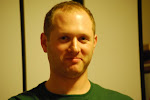The one thing I like more than science museums is science museums with offbeat exhibits. And one of the best such museums is the Museum of the History of Science, at Oxford University. I came across the MHS website a few years ago, and noticed immediately the good selection of online exhibits, including one particularly intriguing exhibit focused on blackboards. Called “Bye Bye Blackboard...From Einstein and Others,” the exhibit showcases, among others, blackboards inscribed by Martin Rees, a Cambridge astrophysicist; Lisa Jardine, Professor of Renaissance Studies at University College London; Brian Eno, visionary musician; and Alain de Botton, a philosopher and author who recently wrote The Pleasures and Sorrows of Work. The idea is to highlight the place that the blackboard has occupied in the history of ideas, and to pay homage to it, even as it quietly recedes from the classroom.
Other cool online exhibits include “The Astrolabe, East and West;” “Garden, Art, Tower, Temple;” “The Geometry of War;” “Fancy Names and Fun Toys;” and “Eccentricity.” The last one is another of my favorites. According to the site, the museum has “taken a broad approach to collecting, and contains many unexpected objects,” including mechanical flytrap from Japan, a typewriter collection, and as astrolabe belonging to Nostradamus. Wow.
Naturally, I had to learn more about this world of wonders. I contacted Jim Bennett, the museum’s former director, and asked him a few questions.
Me: How did you get involved with the MHS?
Jim: I had been curator (as the post was then called) of the equivalent museum in Cambridge -- the Whipple Museum of the History of Science -- for about 15 years, when the curator (as the post was then called) of the Museum of the History of Science in Oxford came to retiring age. In fact, I had two posts in Cambridge -- I was also Senior Tutor of Churchill College -- and I quite liked the idea of having only one. Though relatively isolated intellectually, the Oxford museum is very centrally placed in Oxford and had enormous, untapped potential as a public museum. Anyway, I understand that the panel liked the much more active nature of the Whipple as I had been running it in Cambridge, and I got the job.
Me: How did you get interested in the history of science?
Jim: Like very many people in the discipline in Britain, I discovered the subject as a science undergraduate in Cambridge, and found it much more interesting than straight science. It just suited me better, somehow -- I found I enjoyed reading books! I know that sounds daft, but I didn't grow up in a literary environment. I did science because I could. In Cambridge I found something different; for one thing, I wasn't as good at physics as I thought I was, and also I enjoyed something more related to the humanities. I stayed on to do a PhD in history of science -- on Christopher Wren.
Me: I’m really impressed by the MHS exhibitions, especially the ones about blackboards and eccentricity. Who at the museum helps come up with those ideas? Is there a process you use to create new exhibitions?
Jim: The key is that we are relatively small, so we can take risks -- have an idea and decide to go with it. So, I'm glad you like the exhibition programme -- I hope you don't mind my saying that it has been a fairly creative one -- especially in the context of museums of science.
"Blackboards" was so much my idea that the staff didn't believe in it at first -- I had to do it in spite of their scepticism (which seemed to me the wrong way round - isn't it the director's job to squash silly ideas?), which meant doing all the early work myself (including taking all the blackboards to the celebrity chalkers), till they come round. In fact it was a great success.
The other exhibition that seemed like a real risk and was amazingly successful was “Steampunk,” and the idea for that came form a lighting designer in New York called Art Donovan. The trick there was recognising that something I had never heard of (steampunk) could be made to work for us. It was so popular that we could hardly cope.
Who comes up with the ideas? Usually it’s one of the two curators (Stephen Johnston or me), and sometimes (especially for the smaller exhibitions) education staff. There is an exhibitions committee where they are discussed and planned. All exhibitions come from our work -- I mean we don't buy them in -- all are written and designed (and mostly built) here -- we don't really want to take in exhibitions. Some of the art shows were in collaboration with the Ruskin School of Fine Art and Drawing, and they made the proposals.
The next time I'm in the UK, this is the first place I'll visit.





